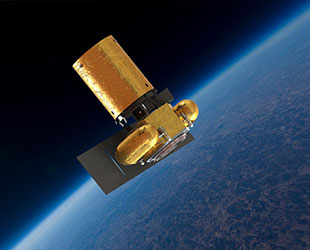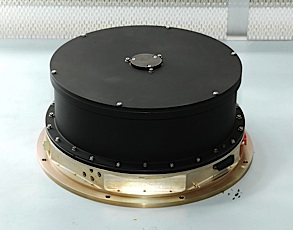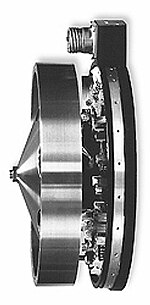 |
| The location of Kepler's reaction wheels. Source: NASA |
On Wednesday NASA announced that the wheel seemed to have failed again. During a semi-weekly contact with Kepler, operators found the spacecraft unexpectedly in safe mode, which is what the spacecraft does when it detects something is wrong. In this mode it ceases science operations and faces the sun to gather as much power as possible, allowing the communicating line with Earth to drop in and out as it spins around the Sun. When operators commanded the reaction wheels to stop rotating the vehicle in order to maintain the communication link, reaction wheel 4 stopped spinning, but maintained full torque, meaning that it was trying as hard as it could to spin up but was not moving at all. This behavior likely indicates a structural failure of the wheel bearing. In other words, bad news bears.
NASA says the Kepler mission was originally only 3.5 years, so technically Kepler completed all of its mission goals. However, it is standard for missions like this to low-ball the life expectancy so that they can tell congress it will cost less, and claim 100 percent mission success even if something goes wrong later in the life of the spacecraft. In reality, missions are often extended for 2-5 times the original mission life. When Kepler reached its original 3.5 year mission goal in 2012, funding for the satellite was extended for six more years. There had been more noise than anticipated in Kepler's data, due to worse than expected signal and more noise than anticipated in the spacecraft, so observations were taking longer than originally expected. It was estimated that Kepler would take until 2015 to fulfill all of it's mission goals. So, if Kepler is headed for hospice, it will have reached it's originally planned mission life, but not entirely fulfilled it's mission goals.
But all is not lost! Kepler operators have not given up on attempts to resuscitate the wheel. They plan to try jump starting it by sending start and stop commands in rapid succession, and perhaps spinning it in the opposite direction. If all attempts fail, they may investigate pursuing other science goals using a scanning mode, where 3-axis control is not necessary.
Even if rejuvenation in some form is not possible, the mission is far from a bust. Kepler has made significant contributions to science and the search for planets. It has identified 2740 candidate stars, and led scientists to estimate that there are at least 17 billion Earth-sized exoplanets in the Milky Way Galaxy alone. There is also a huge trove of data from Kepler that has not been analyzed yet, and will provide fodder for research and discovery for years to come. There may very well be data revealing an Earth-sized star in the habitable zone of a far-away planet, just sitting on a server somewhere waiting to be extracted. And Kepler is just the beginning of that search - NASA is already planning the next generation of exoplanet-finding telescopes, starting with TESS, which would launch in 2017.









